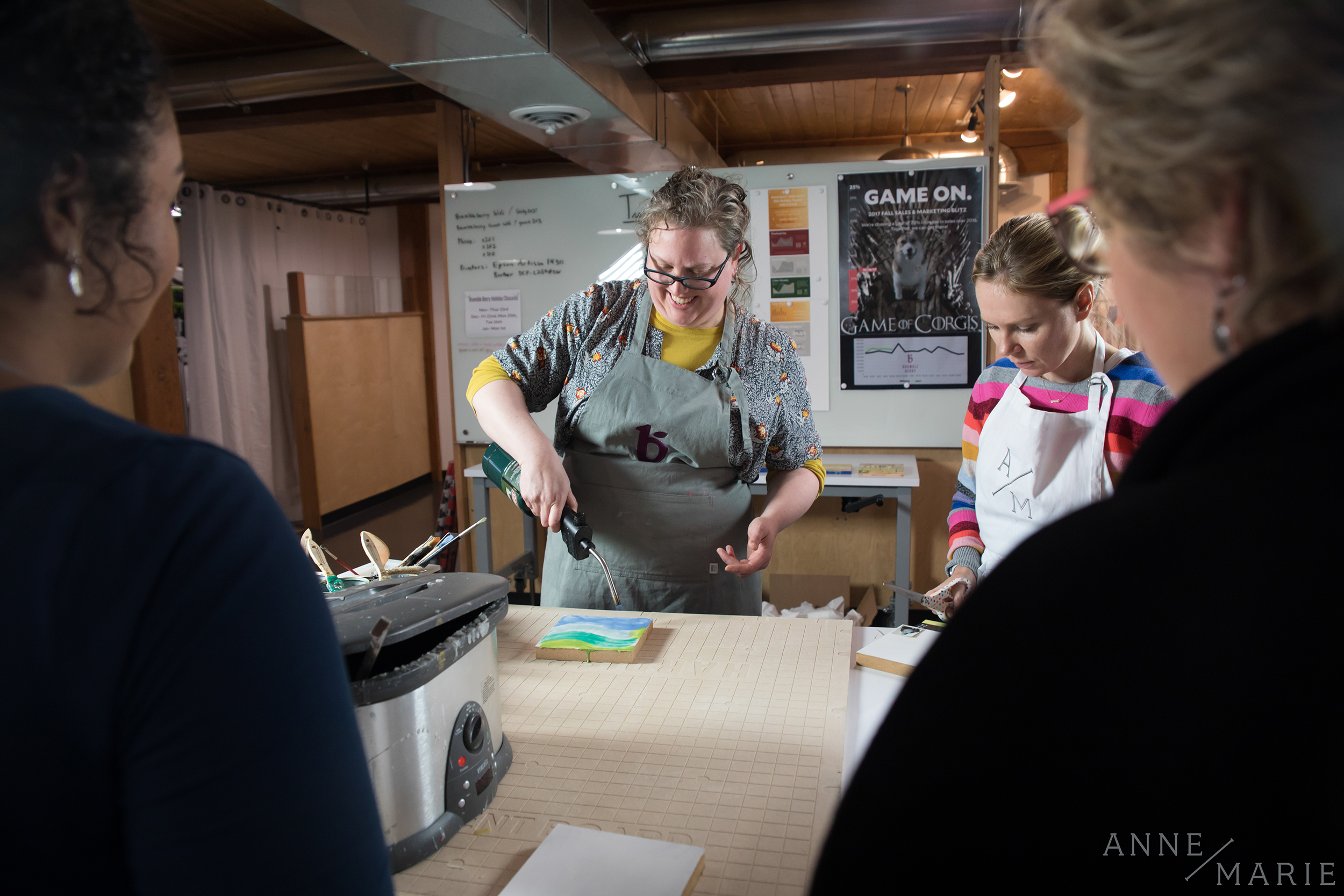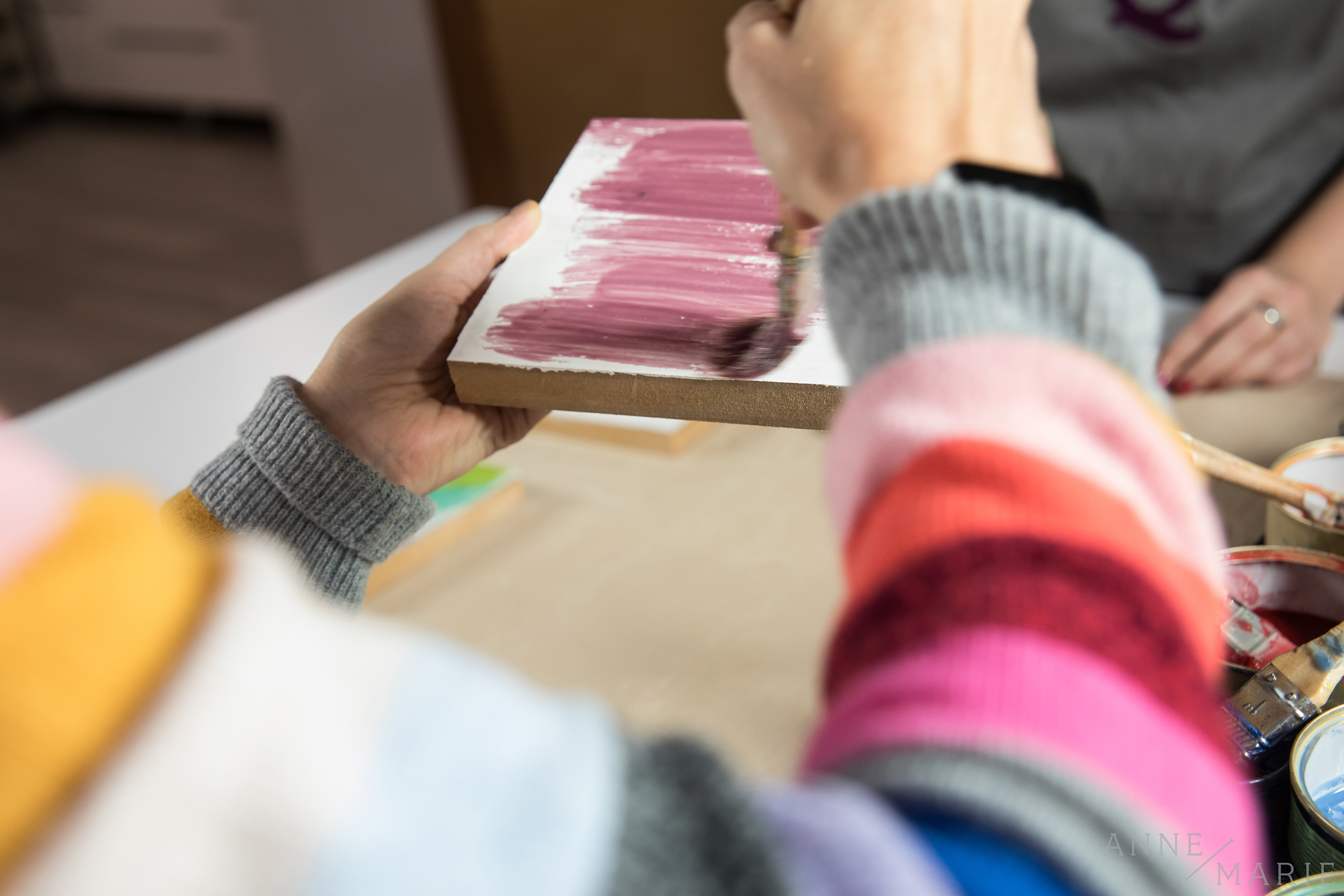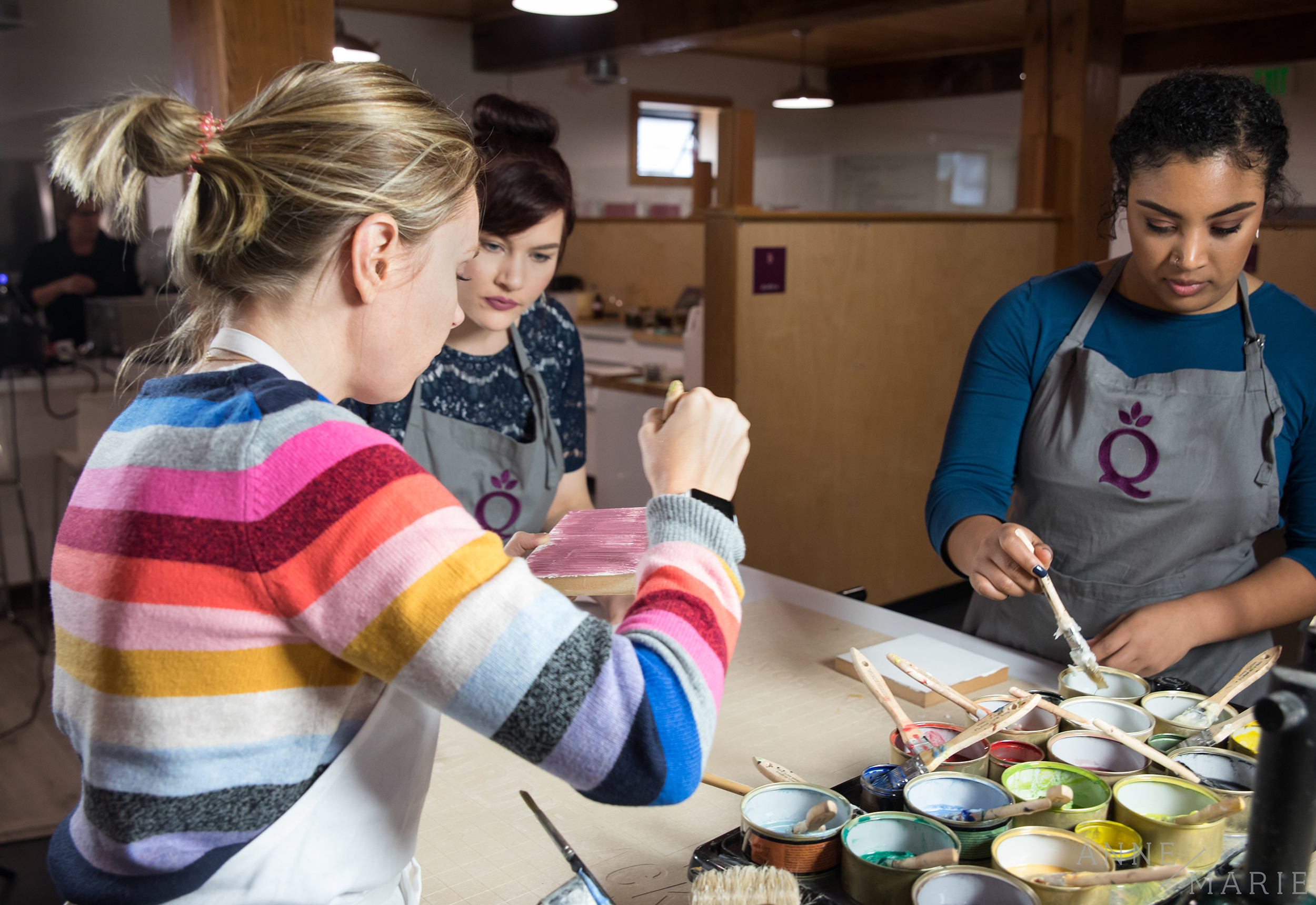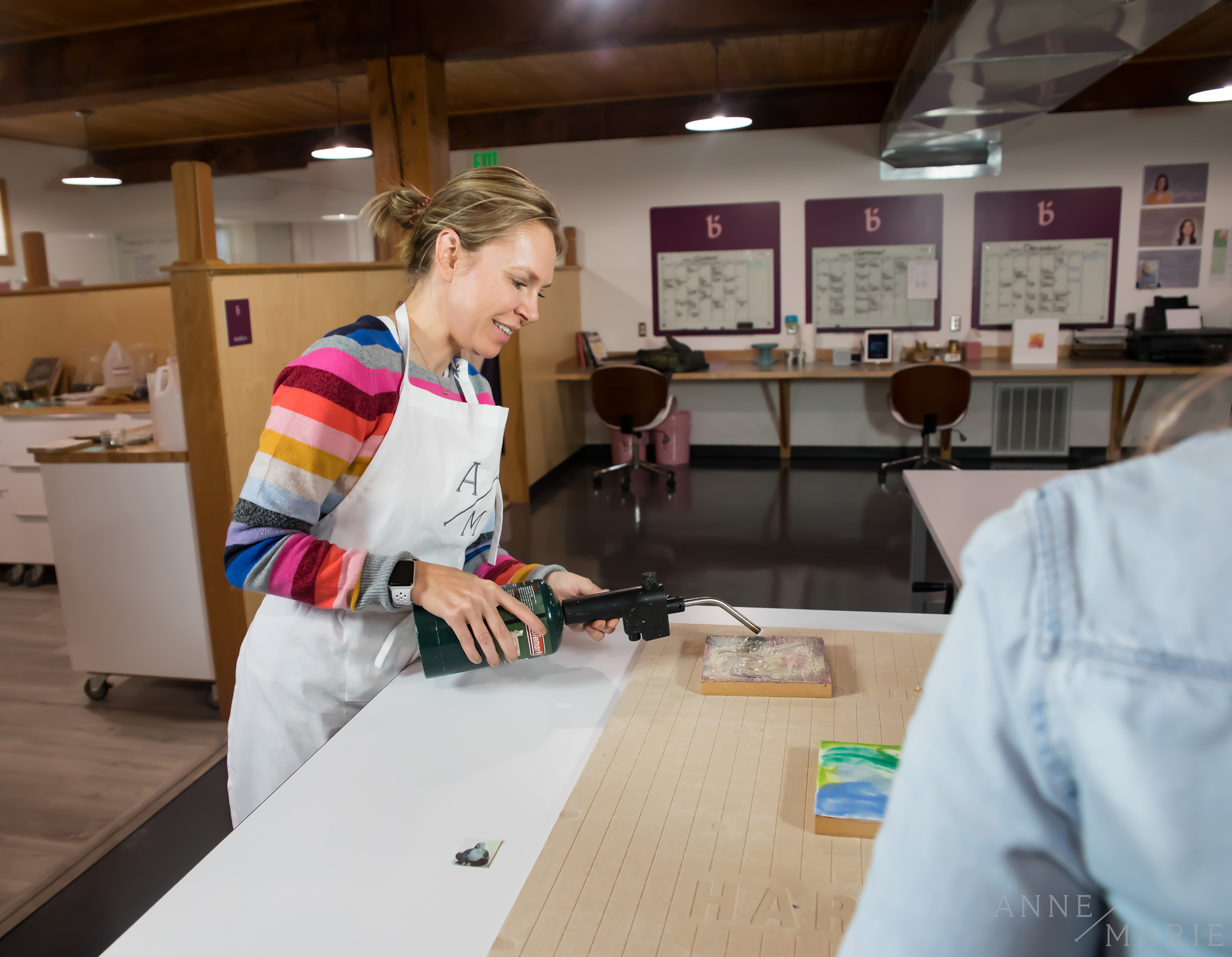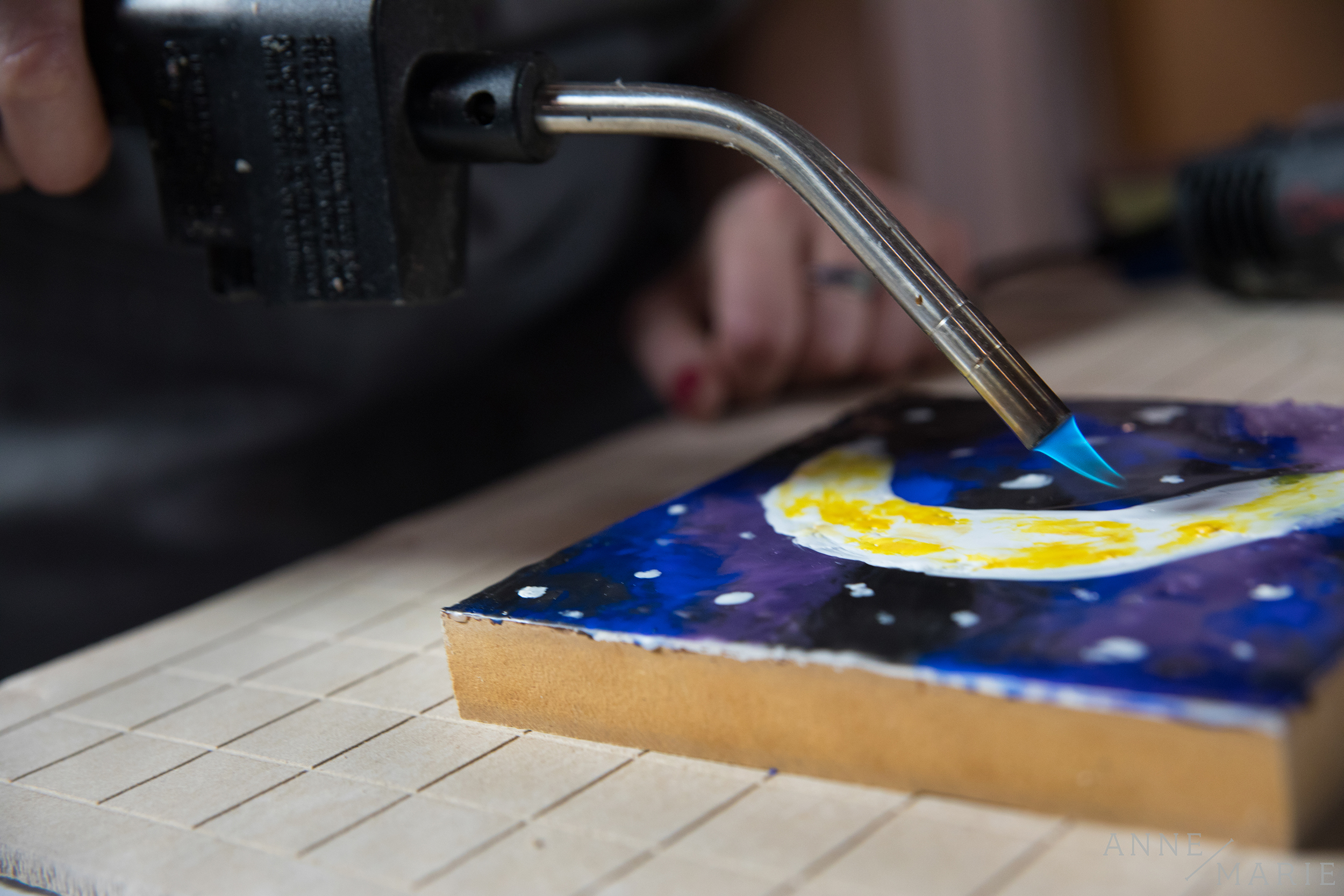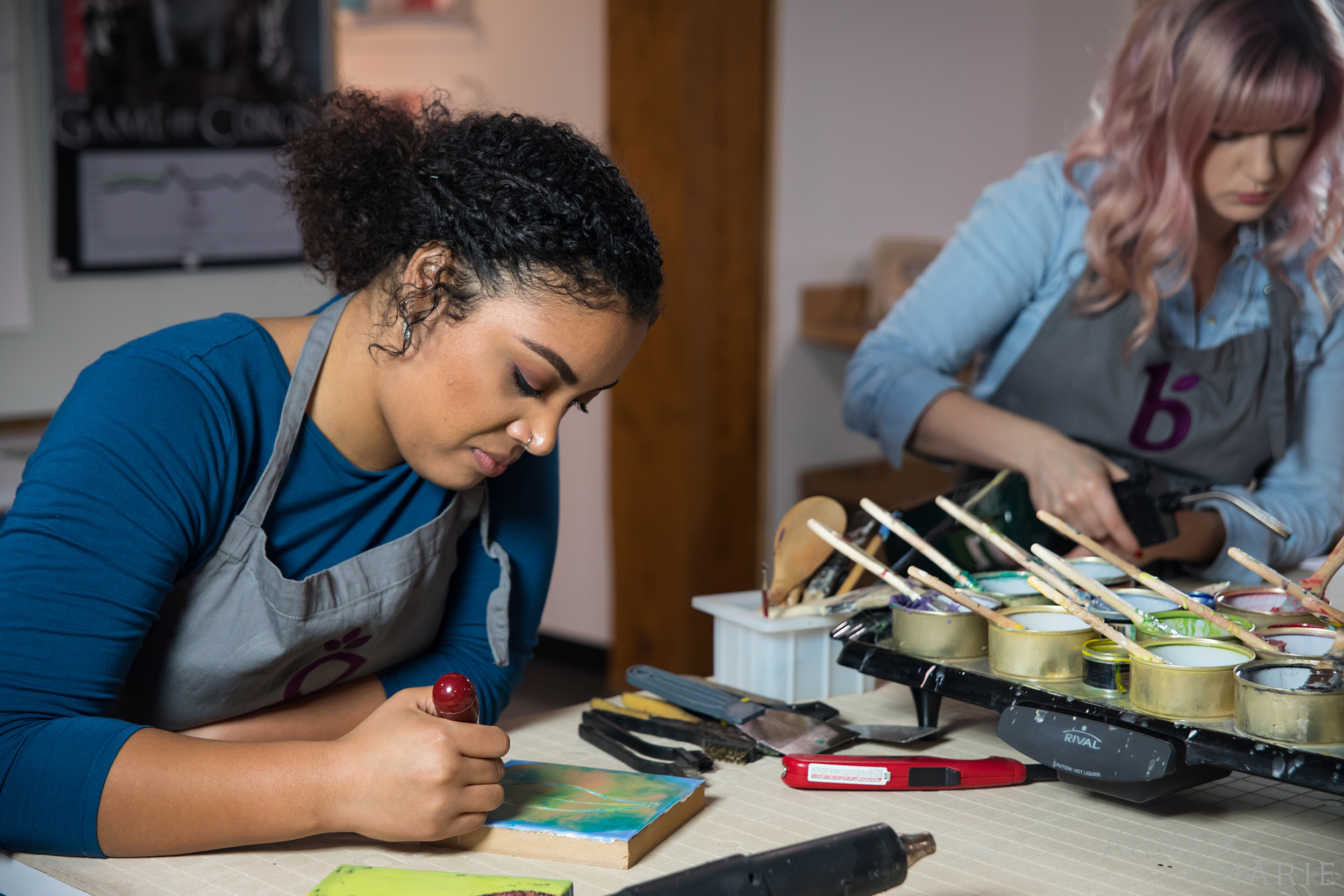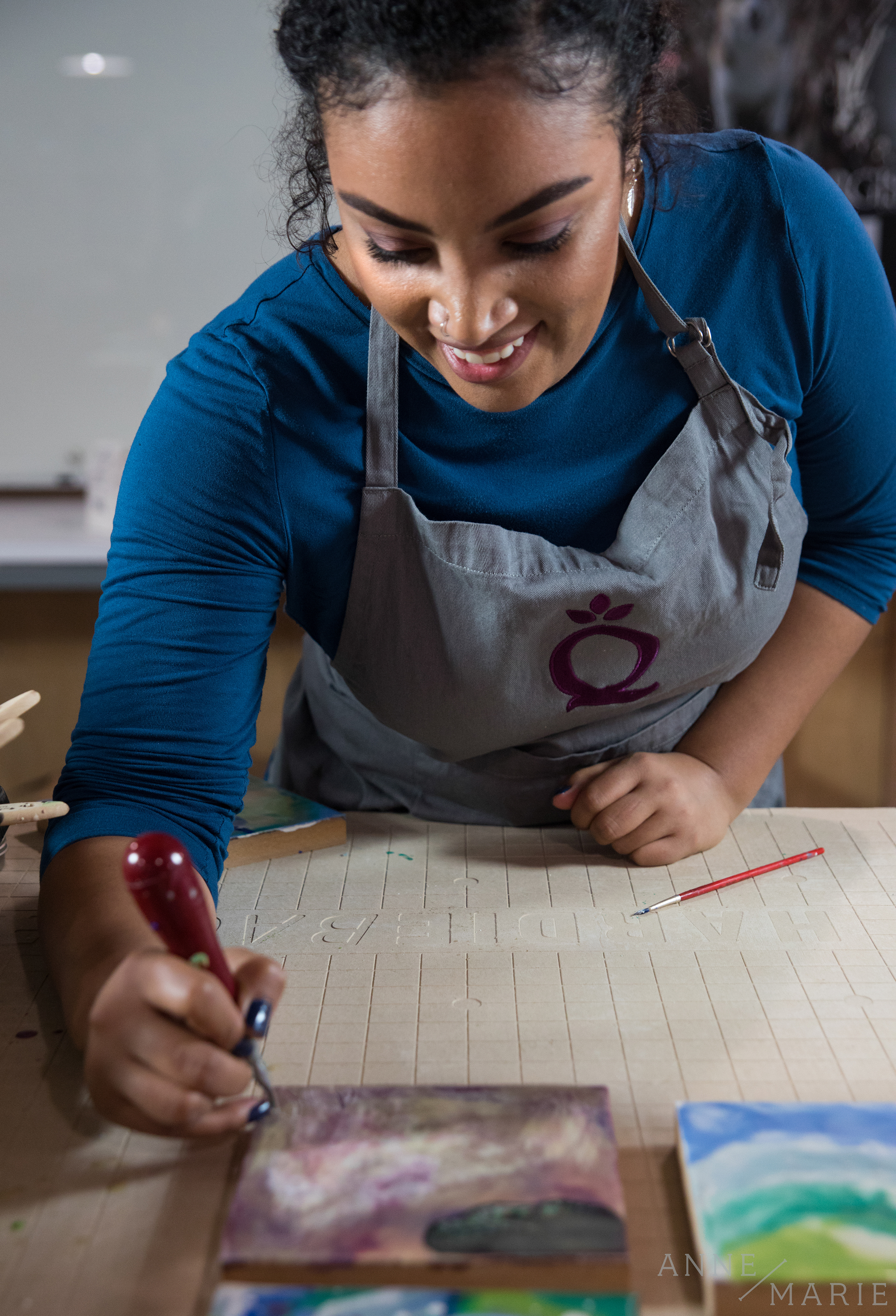Encaustic Painting
A few weeks ago, the Bramble Berry team dove into a different type of painting: painting with beeswax. This technique is called ‘encaustic painting’. Christina, our Creative Projects Coordinator, documented the occasion with photos and this post. I can't wait to get the team together again for a group crafting session. I’m thinking pasta making for this next one. - A/M
Amber lays out a heat-safe board on a table in the middle of the Bramble Berry studio. She sets a pancake griddle with cat food cans of colorful waxes on top of it and a places a blowtorch next to it. As the griddle begins to heat up, she invites the six resident soapmakers to gather round to learn how to paint with wax.
“The oldest paintings we have are the ones that were done with wax,” Amber says as she shows off the beeswax and resin crystals. “Other types of paint will fade, but wax will last forever.”
Amber shows off resin crystals. These are mixed with the wax and allow it to be more translucent and durable and prevents a white cloud from developing on the surface.
Amber's brushes sit in repurposed cat food tins on top of a griddle. As the griddle warms, the wax melts.
The Greeks practiced encaustic painting as early as the 5th century BCE. They used it to paint portraits and mythology on panels, to color marble statues and to weatherproof and decorate ships. Soon the Egyptians and Romans adopted the medium.
For a few years now, Amber has been using Bramble Berry beeswax, powdered oxides and ultramarines and a blowtorch to paint. She strategizes the marketing for Bramble Berry, but she studied fine art in school.
Her brushes are covered in clumps of colored wax. The wax melts as the griddle heats up. The clumps start to slide off.
“Don’t worry about the brushes,” Amber says. “It is impossible to keep natural brushes clean. The wax ruins them.”
She grabs a brush and paints a base layer across an art board. It’s important to fuse the layers of wax together, she says as she picks up the blow torch.
She twists the nozzle. “Turn until you can hear it hiss,” she says.
The torch rouses awake and emits a large orange flame. “See that? That’s too much.”
Amber twists the nozzle till the flame mellows and shrinks in size. She sweeps the flame across the board, melting the wax layers together.
“You should experiment with new crafts, even if they are difficult or uncomfortable because they open your eyes to ways to experiment within your current craft.”
“So who’s ready?” she asks.
After quickly noting where the fire extinguishers are located, everyone jumps in. The tins of colored waxes are mostly melted, with one brush per tin. Kelsey, the editorial director, reaches for dark hues for a night sky. Anne-Marie reaches for a shade of Bramble Berry pink, thinking she could decorate her office.
After each layer of paint, the layers have to be fused with the blowtorch. Kelsey grabs the torch, twists the nozzle and brushes the flame across her art board. Others are more hesitant.
Kelsey fuses her layers with the blow torch. If the flame was too hot, more than just the top layer could be melted causing pigments to mix together.
Etching designs into the wax and then painting over it created interesting textures. Photos could also be added and painted over to create collages.
“Like this?” Anne-Marie asks as she twists the nozzle of the blow torch.
“Turn it more,” Amber says.
“Like this?”
“More.”
Anne-Marie twists the nozzle. Suddenly a large flame bursts from the torch. Anne-Marie shrieks as she frantically twists the nozzle back the other way to calm the flame. Finally the blue flame is just right for Anne-Marie’s layers to fuse.
“I like that you can redo everything and nothing is ever final,” Anne-Marie says.
Everyone's projects look different. Some are thick layers of wax with designs etched in, other projects cover images in wax to create collages, and some are abstract designs.
“Experimenting with it all together was a great moment. There was laughing and camaraderie, and it took the sting out of the project not turning out perfectly.”
The torch is passed around and the layers of wax are built. The flame and the wax become unpredictable. Sometimes the pigments move and blur together when the torch hit them. The plans and visions for each piece quickly give way to something more primary.
“You should experiment with new crafts, even if they are difficult or uncomfortable because they open your eyes to ways to experiment within your current craft,” Anne-Marie says.
Despite how frustrating it feels when the flame moves a layer or when skill doesn’t match vision, this endeavor still manages to be fun and exciting.
“I loved experimenting with something so new and different. Especially with our small group,” Anne-Marie says after the paints are put away and the brushes packed up. “Experimenting with it all together was a great moment. There was laughing, camaraderie, and it took the sting out of the project not turning out perfectly.”
Photos by Christina Becker.




